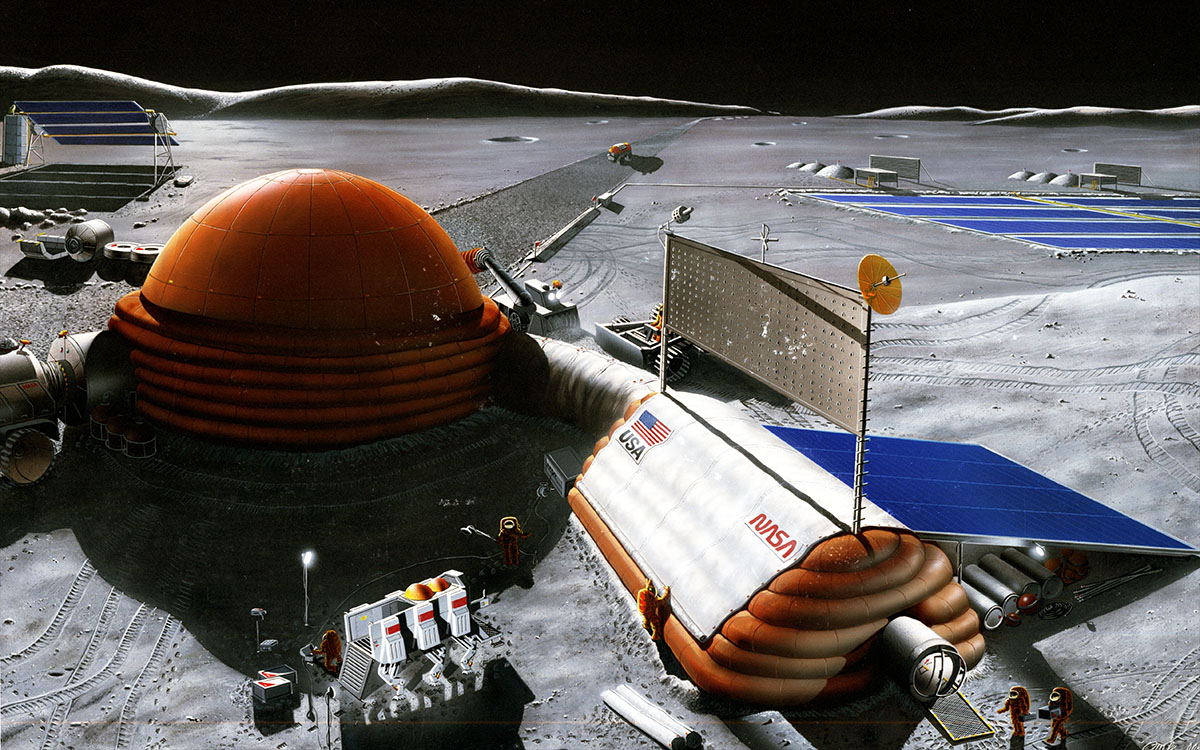why we need to return to the moon

Imagine a place where the conditions are just as harsh and brutal as we would encounter on other planets, a place with low gravity, a solid foundation for sprawling, inflatable bases, and a perfect platform for testing new technologies to be used for space exploration. And should something go wrong, Earth is just a couple of days away so crews could execute a hasty retreat to the safety of their home planet if the situation calls for it. I’d ask where we could find this nearly ideal proving ground but then again, the title of this post sort of gives away the answer. If we stop to consider what settling on the Moon can do for our space exploration programs, the often heard attitude of “been there done that” in regards to our natural satellite seems rather short-sighted, trapped in the Cold War mentality of traveling to other worlds solely for the sake of flag planting and national prestige.
Going back to the Moon simply to plant another flag would indeed be a waste of time, money and effort since it doesn’t offer anything new either scientifically or technologically to either NASA or us. However, if we wanted to establish the first extraterrestrial outpost specifically to see if we could live and work beyond Earth’s orbit, this would make the Moon a much more attractive destination. Consider an ISS but in the form of a rapidly growing network of artificial habitats and hydroponic farms, and hopefully without the political and financial quagmires keeping the station from working at full capacity.
Of course, the price tag for an endeavor like this would be quite daunting as we’ve discussed before, but the payoff over the long term would be well worth it. Just think of the technology for building portable infrastructures in pristine, alien deserts we could test, the incredible radio astronomy we could do on the dark side of the Moon, the vacation destinations we could build to actually make money from space exploration, along with the kind of services we’d need to provide to make travel to the newly built lunar outposts easier. We could learn how to live on another world while barely leaving the comfort of Earth, with help or a safe heaven just 236,000 miles away, the cosmic equivalent of next door.
But all these tests wouldn’t be just for show or an inspirational public relations campaign. No, the devices that would create a portable, scalable energy grid could be brought back to Earth and scaled up to serve an entire region where building power lines and massive power plants would be far too cost prohibitive and risky with a conventional approach. Even wealthy countries could benefit from moving to portable, more manageable, and almost certainly more efficient energy grids. Space tourism could generate thousands of jobs, selling space in lunar habitats and observatories to wealthy tourists, corporations, government agencies, and universities. And having lunar hangars where craft roughly six times bigger than anything which could be launched from Earth may be assembled, can pave the way to safer, more comfortable, and efficient means for interplanetary travel.
The Moon shouldn’t be an afterthought of the Cold War to be neglected based on the impact of flag planting missions. It should, and can be, our launching pad into living and working in the most hostile and alien environments we can find. The lessons we can learn would enable us to travel to Mars and far beyond in larger, better equipped, cheaper, and more sustainable vehicles partially financed by those who want to benefit from massive R&D projects and turn the technology back into real world applications.
This is why the strategy outlined by Obama isn’t going to get us very far. It ignores just how much is left to be done on our nearest cosmic neighbor and how it can equip us to take the kind of bold steps envisioned back at the dawn of the Space Age. Hopping around asteroids and coming up with a Martian mission from scratch to be done sometime in the intermediate future isn’t going to help us have a sustainable, manned exploration program. We’ll plant a flag and go home at best, turning the kinds of momentous occasions which should be used for profound lunges forward in technology and science into PR stunts.
How does this approach help our species? How does it help us sustain our gains? A viable space exploration strategy should not be based on big moments and firsts, but on developing consistent, reliable technology that builds on the gains of previous missions in a condensed timeline given to reach a specific destination. This is exactly how NASA was able to reach the Moon right on schedule while the PR-obsessed Soviet Union couldn’t make it past Earth orbit…





